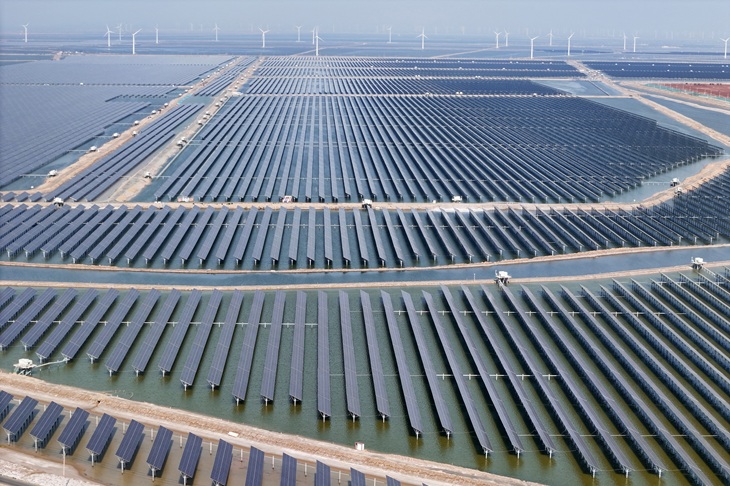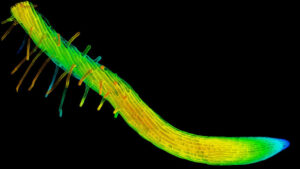
Solar panels and wind turbines are seen at the Huaneng Binzhou new energy power generation project in Binzhou, in China's eastern Shandong province on June 11, 2025. (Photo by AFP) / China OUT (Photo by STR/AFP via Getty Images)
In a world increasingly fixated on the looming threat of climate change, it’s remarkable how little attention is paid to the natural disasters that have historically posed the greatest risks to life on Earth. While activists and politicians focus on carbon emissions and global warming, the threats from asteroids, supervolcanoes, and other natural phenomena remain largely ignored.
Asteroids, flood basalts, and supervolcanoes have been responsible for mass extinctions throughout Earth’s history. Yet, there is little public discourse or political will to address these potential cataclysms. For instance, Australia, with its vast scientific resources, has not prioritized a space program to monitor and potentially deflect hazardous asteroids.
The Ignored Threats of Natural Catastrophes
Consider the impact of a significant solar flare or the reversal of Earth’s magnetic poles. These events could disrupt global communications and technology, leading to chaos in our technologically dependent societies. Despite these potential threats, the focus remains on climate change, often to the exclusion of other pressing issues.
Recent interactions with AI systems, such as the incident involving X’s AI Grok, highlight the growing influence of technology on public perception. As AI becomes a primary source of information, the risk of biased or incomplete data shaping public opinion increases. This reliance on AI over original source material could have significant implications for how society prioritizes threats.
Climate Change vs. Natural Disasters
While climate change is undoubtedly a significant issue, the disproportionate focus on it may lead societies to neglect other existential threats. The hysteria surrounding climate change can be likened to fearing the Loch Ness monster while living next to a more immediate danger, such as a terrorist organization. This analogy underscores the misplaced priorities in contemporary environmental discourse.
Moreover, the push for Net Zero emissions, while well-intentioned, may inadvertently increase societal vulnerability. By removing redundancies, such as gas utilities, societies may find themselves ill-prepared for natural disasters that disrupt renewable energy sources.
Historical Context and Expert Opinions
Historically, societies have been swayed by the fear of apocalyptic scenarios, often to their detriment. The overreaction to the COVID-19 pandemic, for instance, demonstrated how quickly fear can lead to drastic societal changes. As experts have noted, the human tendency to react to perceived threats rather than actual ones can lead to misguided policies.
“The false cries of apocalypse can make smart societies do dumb things in unnecessary self-defense.”
Experts argue that a balanced approach, which includes preparing for natural disasters alongside addressing climate change, is crucial. Australia’s geological history, with its ancient rocks and potential asteroid craters, offers valuable insights into past extinction events and the importance of preparedness.
The Case for a Broader Perspective
Recent discoveries, such as the Deniliquin structure in New South Wales, believed to be a massive asteroid crater, highlight the need for a broader perspective on existential threats. The impact that created this crater may have triggered a significant glaciation and extinction event millions of years ago, serving as a stark reminder of nature’s power.
Meanwhile, asteroids like 2024 YR4, which recently passed close to Earth, underscore the ongoing risk posed by space objects. Although this particular asteroid is not an immediate threat, its potential impact on the Moon could disrupt satellite communications, affecting global defense systems.
Looking Forward: Preparing for the Unseen
As societies become more technologically advanced, they also become more fragile. Events that might have been survivable in the past now pose significant threats due to our reliance on complex global systems. The potential for natural disasters to disrupt these systems requires serious consideration and investment in redundancy strategies.
“Asteroids slightly larger than 2024 YR4 hit Earth every 10,000 years. One hit the Siberian region of Russia in 1908.”
Experts suggest that nations should invest in infrastructure and technology that enhance resilience against natural disasters. This includes maintaining and upgrading essential services, such as roads and dams, to ensure communities are prepared for emergencies.
Ultimately, while climate change remains an important issue, it is essential not to overlook the myriad other threats that nature poses. By broadening our focus, societies can better prepare for the future and ensure a more secure and sustainable existence.







